Adam Harrower (Kirstenbosch) had spotted a population of one of my new species of Hyobanche at Grootbos Private Nature Reserve earlier this year and let me know about it. He also gave me a virtual introduction to Heiner Lutzeyer who founded the reserve. So, On Oct 25th Esprit and I made a trip over to the reserve to go out on the property with Heiner.

The plants were in fruit and well past flowering, but still above ground and workable for the host plant survey I'm doing. This is quite a robust clump in the middle of a patch of grass and it was a bit of a challenge to do the excavation through this turf, but the day was quite successful.

I noticed right away that there was something going on in this clump that was a bit unusual. First of all, the soil at the base of the inflorescences was pretty disturbed and it seemed as if the bottom flowers were becoming buried. Then I noticed that there were ants all over the plants, coming up from the soil surrounding them.
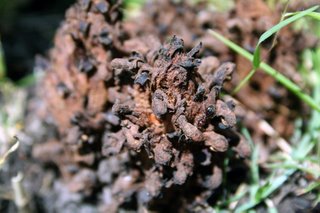
If you click on the photo to enlarge it you'll see a couple of the ants crawling over the plants. They were going in and out of the old flowers to reach the fruit capsules.
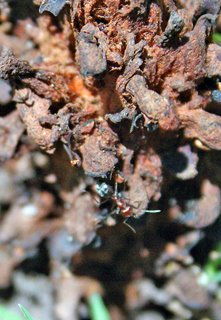
Here's a close-up of the ants (harvester ants, I think).
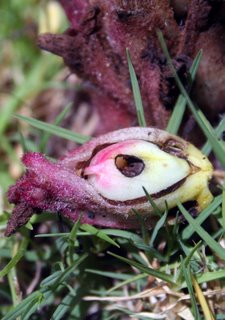
I think the ants are harvesting the seeds from the capsules. It's been hypothesized that the seeds of Hyobanche are ant-dispersed and I agree with that hypothesis after observing this population.
I've previously observed ants nesting in the old inflorescences of some species, but this is the first time I've seen this kind of activity for myself.
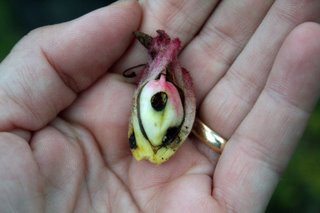
Each capsule has several bite holes and many seeds removed.

I've broken apart the capsule to see what it looks like inside. I don't think the seed capsules dehisce in Hyobanche. This appears to be a good strategy for seed dispersal. Some of the seeds are lost to predation, but the ones that end up in ants nest forgotten after awhile are in a perfect position to germinate in proximity to a host root.
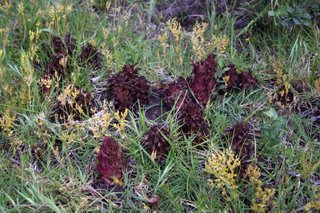
Here's the clump prior to my excavation. This is probably one or just a couple of plants.
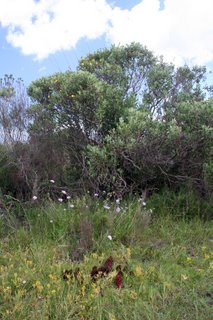
A habitat picture. Chrysanthemoides, Metalasia, Passerina and probably Bromus are all in proximity as potential host species.
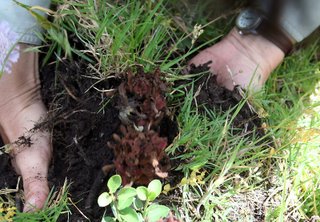
As usual, the digging is best done by hand.
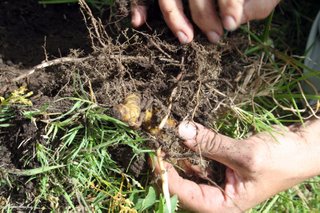
With this heavy turf, the going is slow and careful. There are a lot of roots that may be connected to the parasite so I have to be very careful.
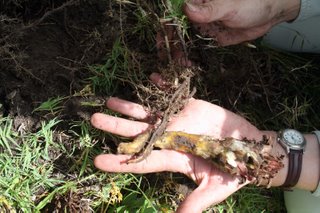
This looks like a prime catch with those big roots surrounding the parasite rhizome.
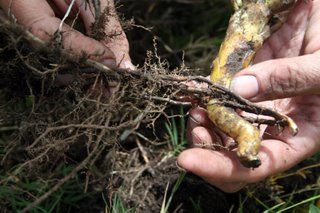
It seems as if these roots are attached to the parasite.
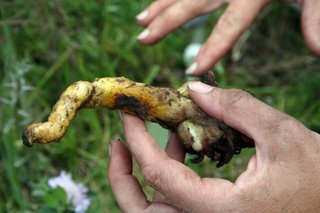
No such luck, though. The Hyobanche rhizome was growing between the roots, but there wasn't a haustorial attachment. Darn! Can't use these roots in the survey.
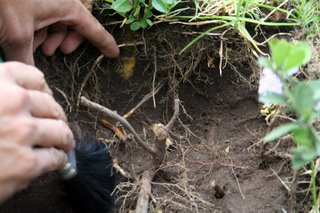
Back to work!

There were a lot of little rhizome fragments in the soil. I probably broke some of them while digging, but some seem like they were unattached. I think vegetative propagation is important in Hyobanche given how easily the rhizomes fracture.
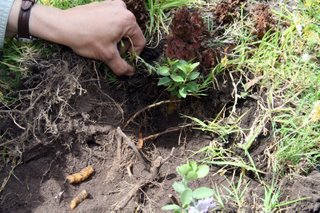
There were a lot of potential host attachments as well and so I had to be very careful.
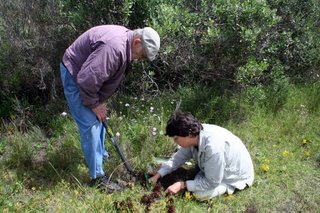
Heiner was very interested in the proceedings.
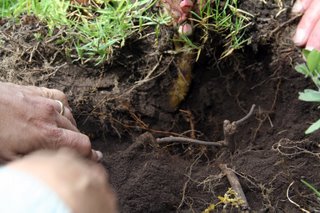
Man, this turf was hard to dig in. There were a lot of woody roots to navigate around.

Victory at last. I snagged a handful of good host root connections here.

Pretty dirty work, but the rewards are worth it. We'll have good results from this root sample.
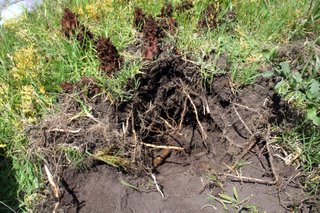
It's hard to tell from this angle, but the hole goes down more than a foot. It took awhile to dig by hand, clearing the soil away from all the potential host roots.
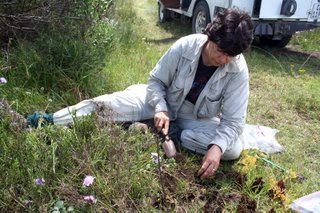
Strangely enough, I actually enjoy this work.
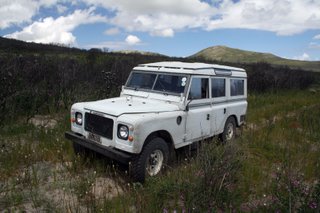
After I finished the excavation, Heiner offered to show us around the reserve. We were in this vintage Land Rover. I forgot to ask what year this was made, but it seemed like it was something from the 1940's - still going strong.
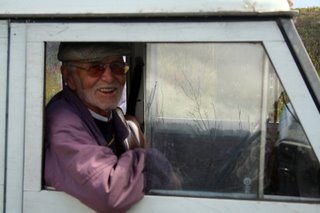
Here's Heiner at the wheel. The windows slide back and forth instead of rolling up and down.
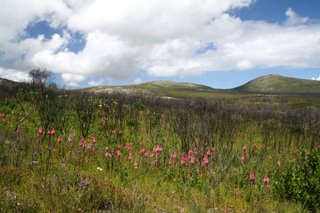
We drove through the recent burn area of the reserve, which included his residence.
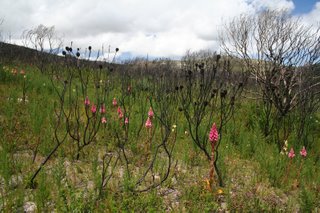
The fynbos is recovering rapidly and there were a lot of geophytes (earth lovers - e.g., plants with bulbs and corms) in bloom. Those pink flowering plants are a species of orchid in the genus Satyrium.
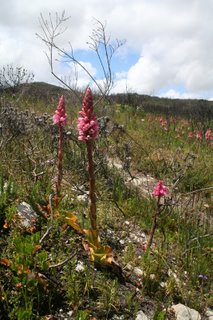
Here's a closer look,
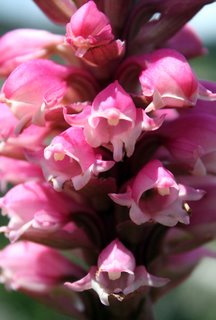
and a detail picture.
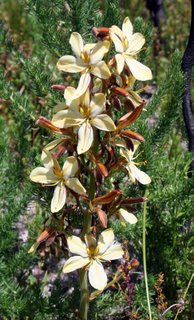
I'm not sure what this one is.
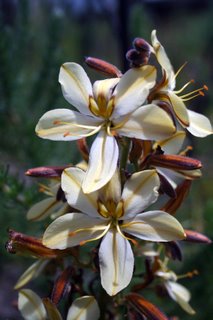
Here's a detail, though.
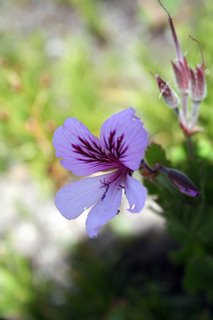
This is Pelargonium (species name to be added after I check my fieldbook).

This is Pelargonium (another species name to be added here).
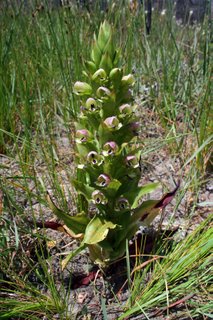
I don't know the name of this orchid, but Heiner said it was very rare and that he had found only one individual on the reserve. That was until a few days ago when he had some researchers from Kirstenbosch out and they found another individual. I made Heiner very happy by finding this third individual.

Here's a close-up. There's a caterpillar eating away the floral parts on the upper right flower.
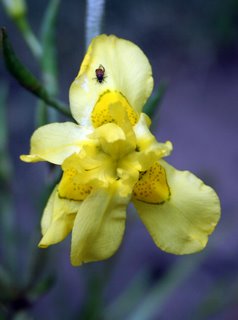
This is a species of Morea in the iris family. Morea is an interesting genus and I've enjoyed making its acquaintance of the past 10 years.
 After the tour, Heiner and his wife, Eva, invited us to have lunch. Eva prepared a lovely meal of fish, vegetables and salad. This is the view from their veranda. There are whales there in the bay and you can hear them when they surface to breathe.
After the tour, Heiner and his wife, Eva, invited us to have lunch. Eva prepared a lovely meal of fish, vegetables and salad. This is the view from their veranda. There are whales there in the bay and you can hear them when they surface to breathe.Heiner's son has a beautiful 5-star resort on the property. I can heartily recommend a visit.
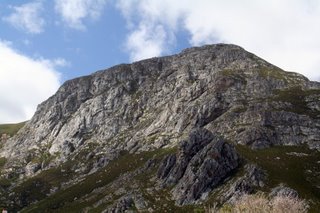
Driving back through Hermannus, you see this mountain with the classic Cape Fold Belt rock formations.
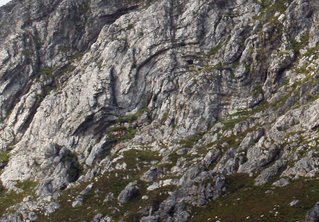
Detail of the folded rock. Imagine what kind of pressure the rock was under to make these accordian pleats. That's what happens when continents collide.




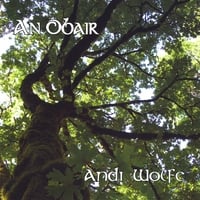






No comments:
Post a Comment